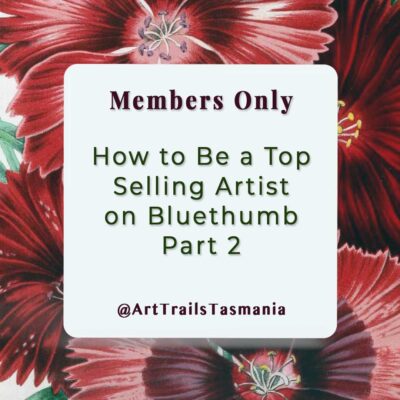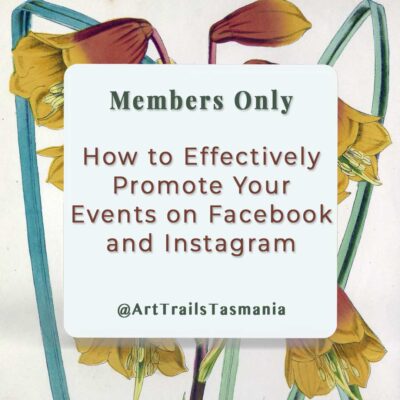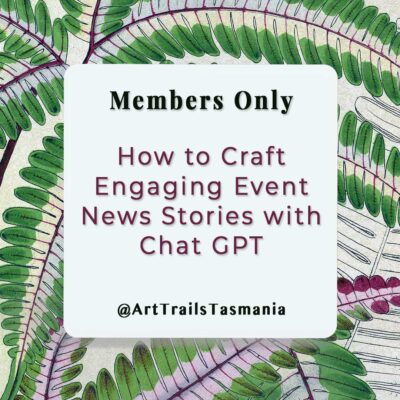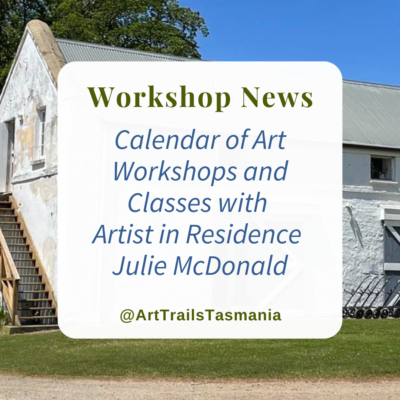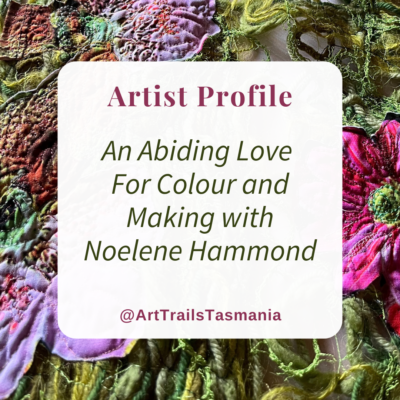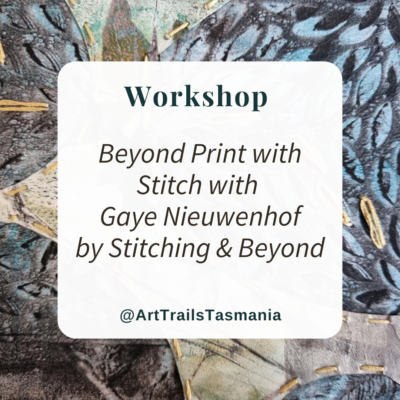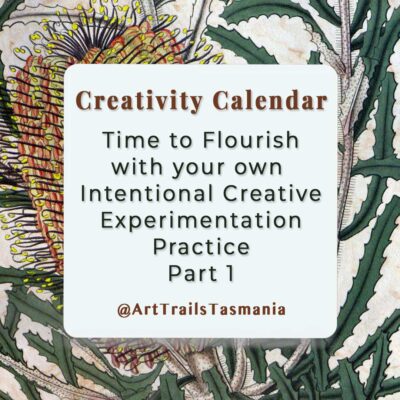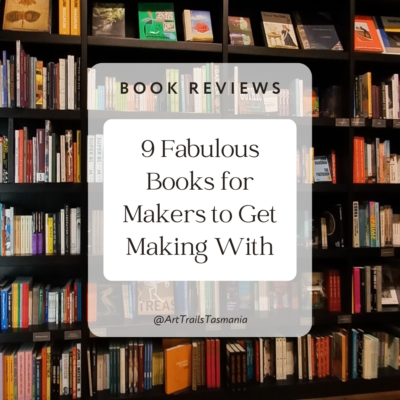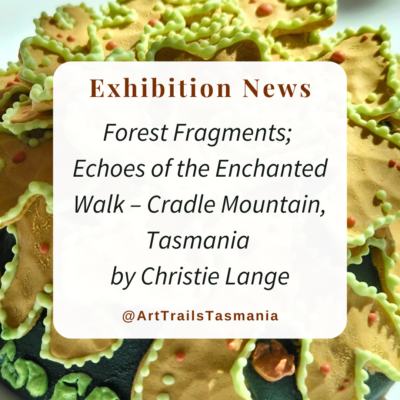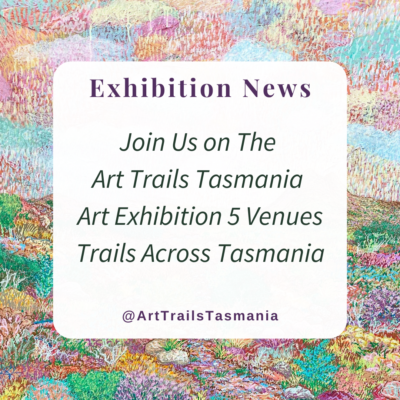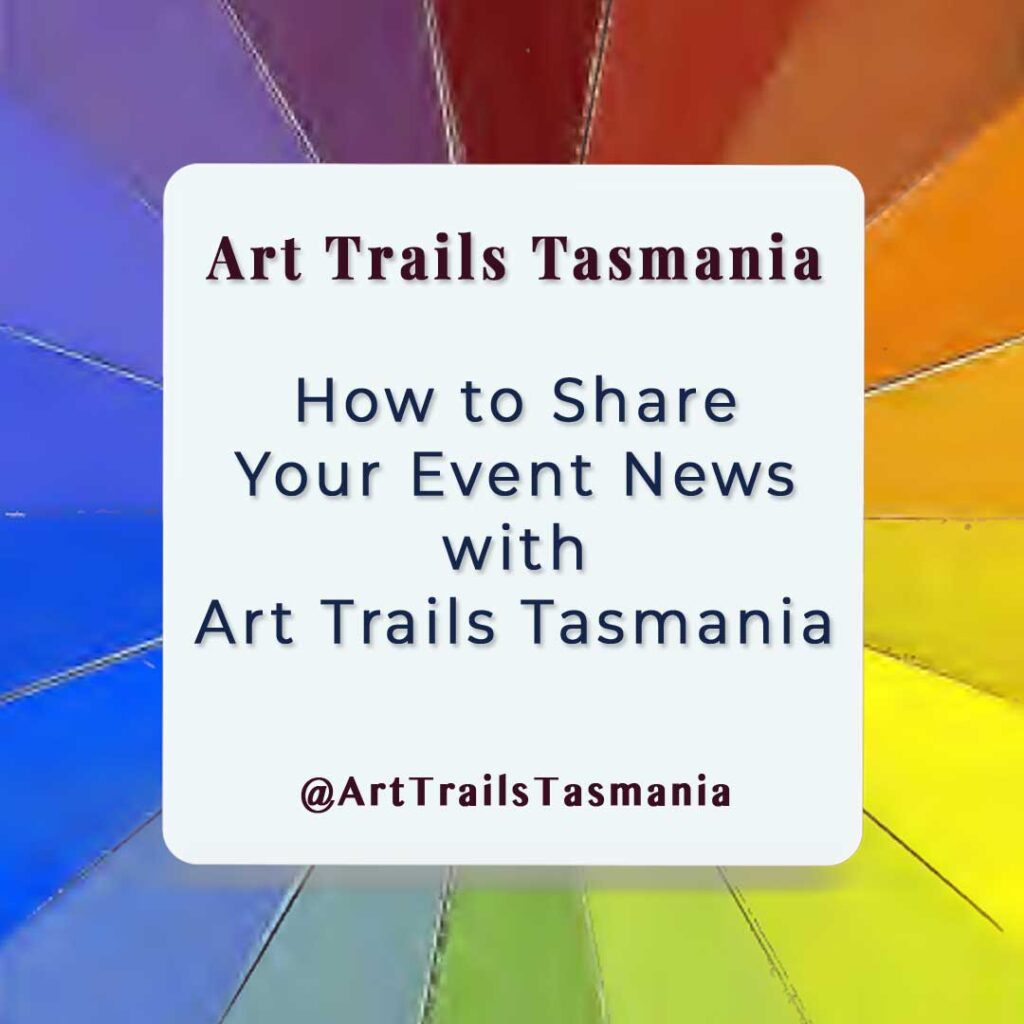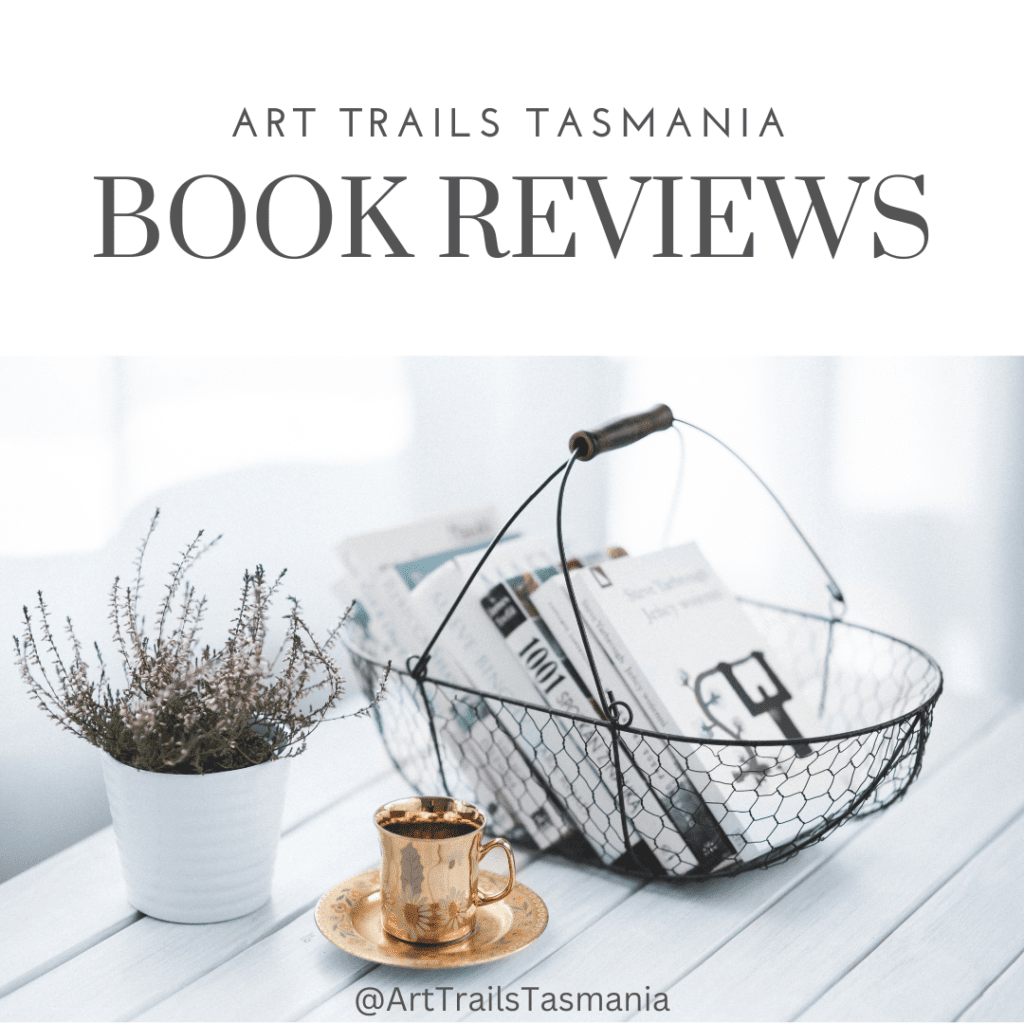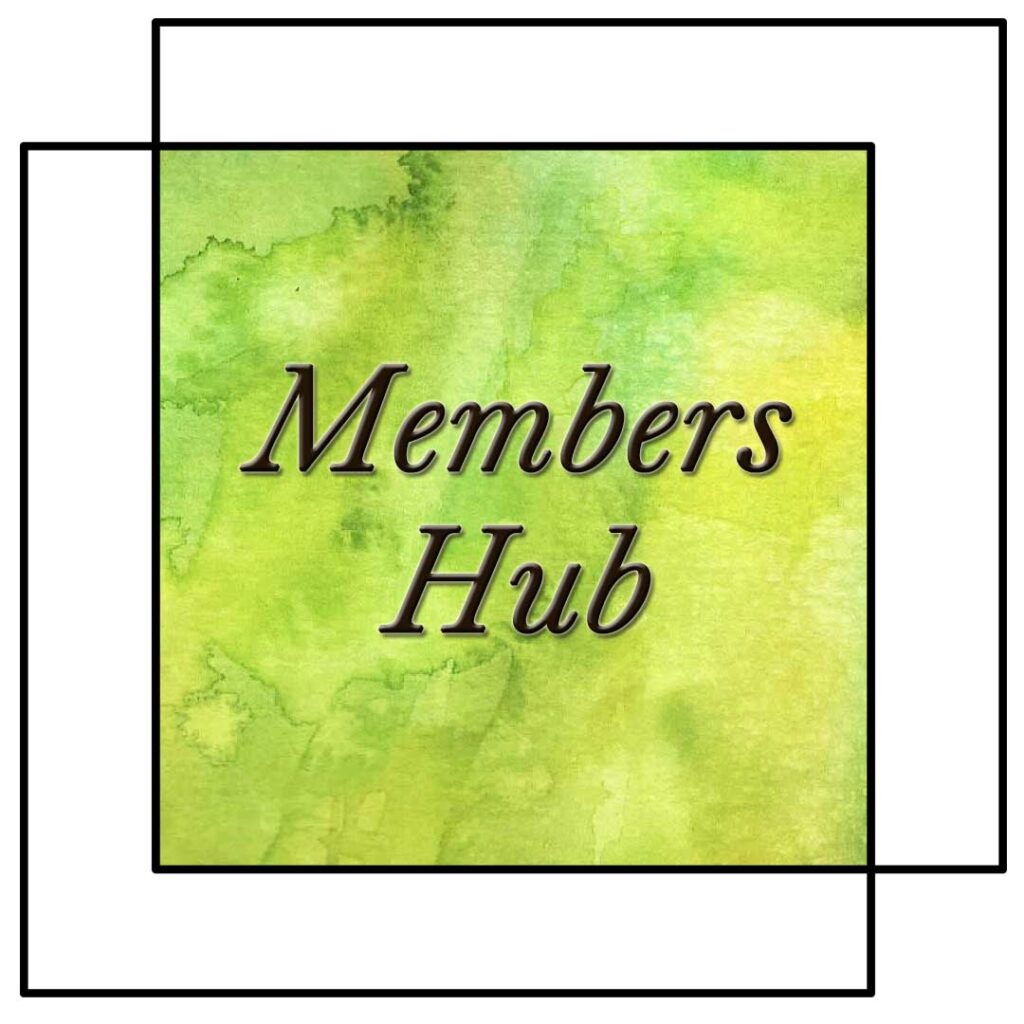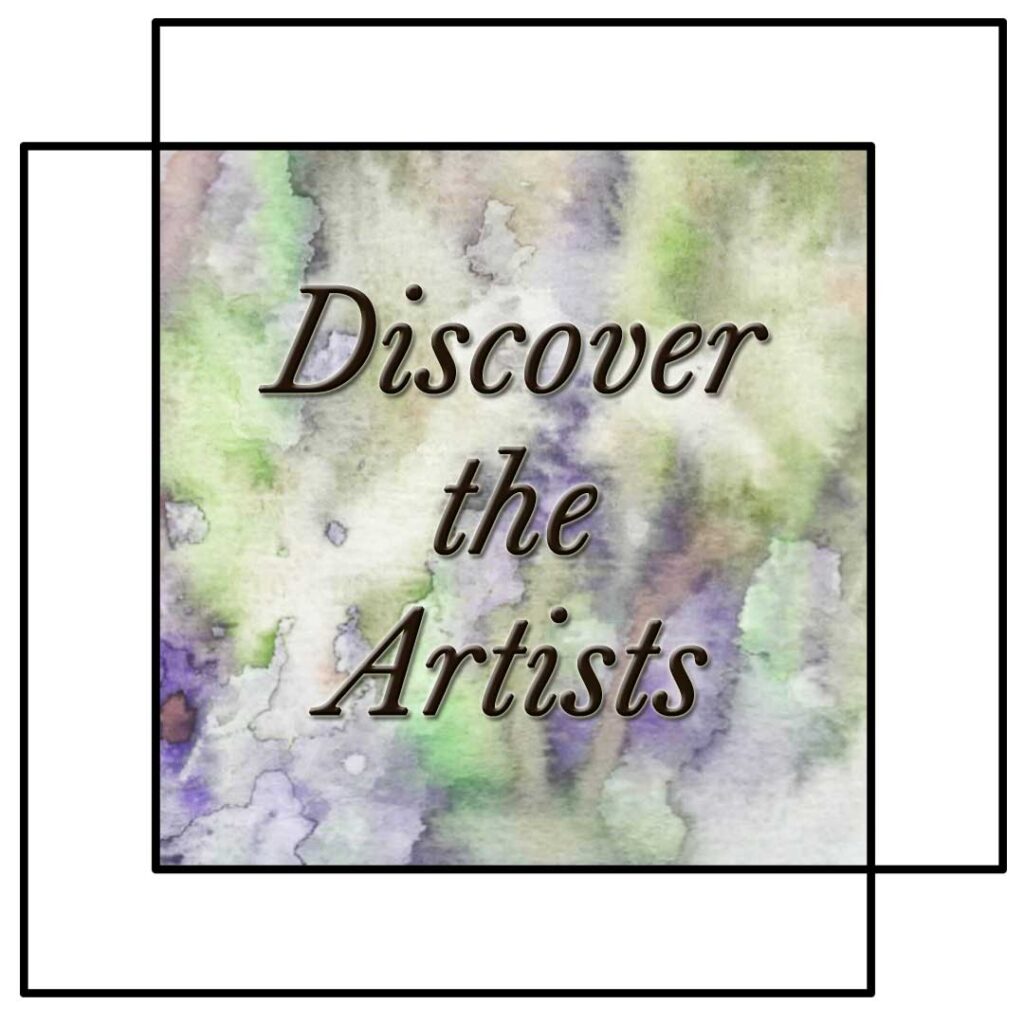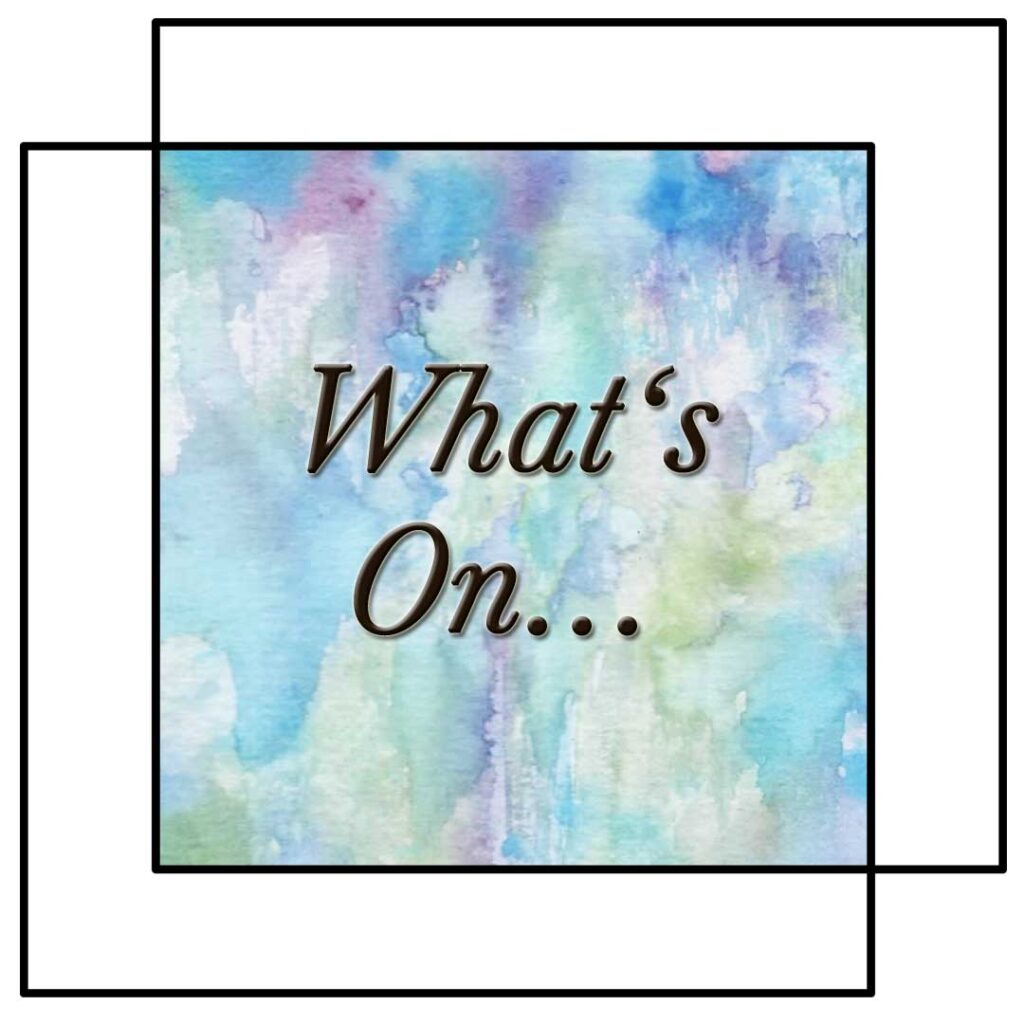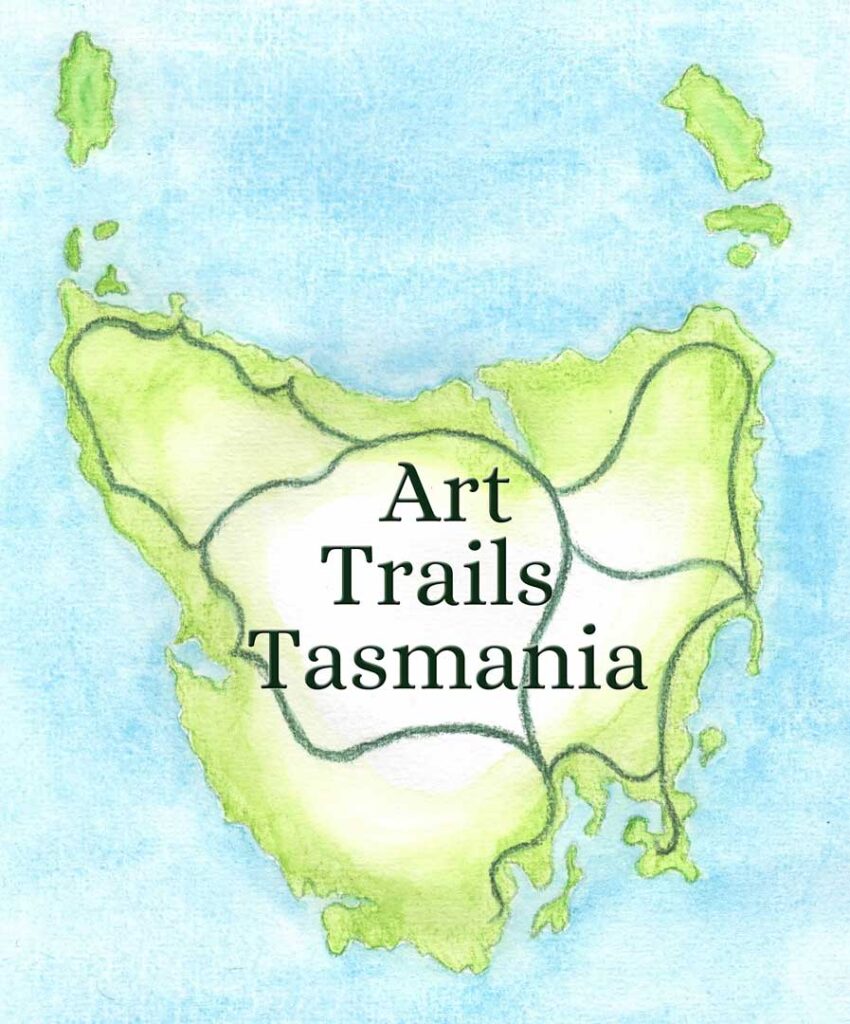Finding Joy in Restful Creativity
Creativity does not thrive on constant motion; it flourishes when given space to breathe. Rest is not absence, but a quiet resource that renews energy, focus, and imagination.
Where Part 1 explored how boredom, sleep, and daydreaming nurture the creative mind, this companion piece offers twelve practical rituals that turn rest into fertile ground for artistic growth.
These practices are intended to be lived slowly, integrated gently, and tailored to Tasmania’s landscapes — from the damp hush of rainforests to the bright clarity of coastal light.
Each ritual offers a way to pause with purpose: moments where the senses, body, and imagination find harmony. They encourage playfulness, creative mindfulness, and the joy of making without expectation.
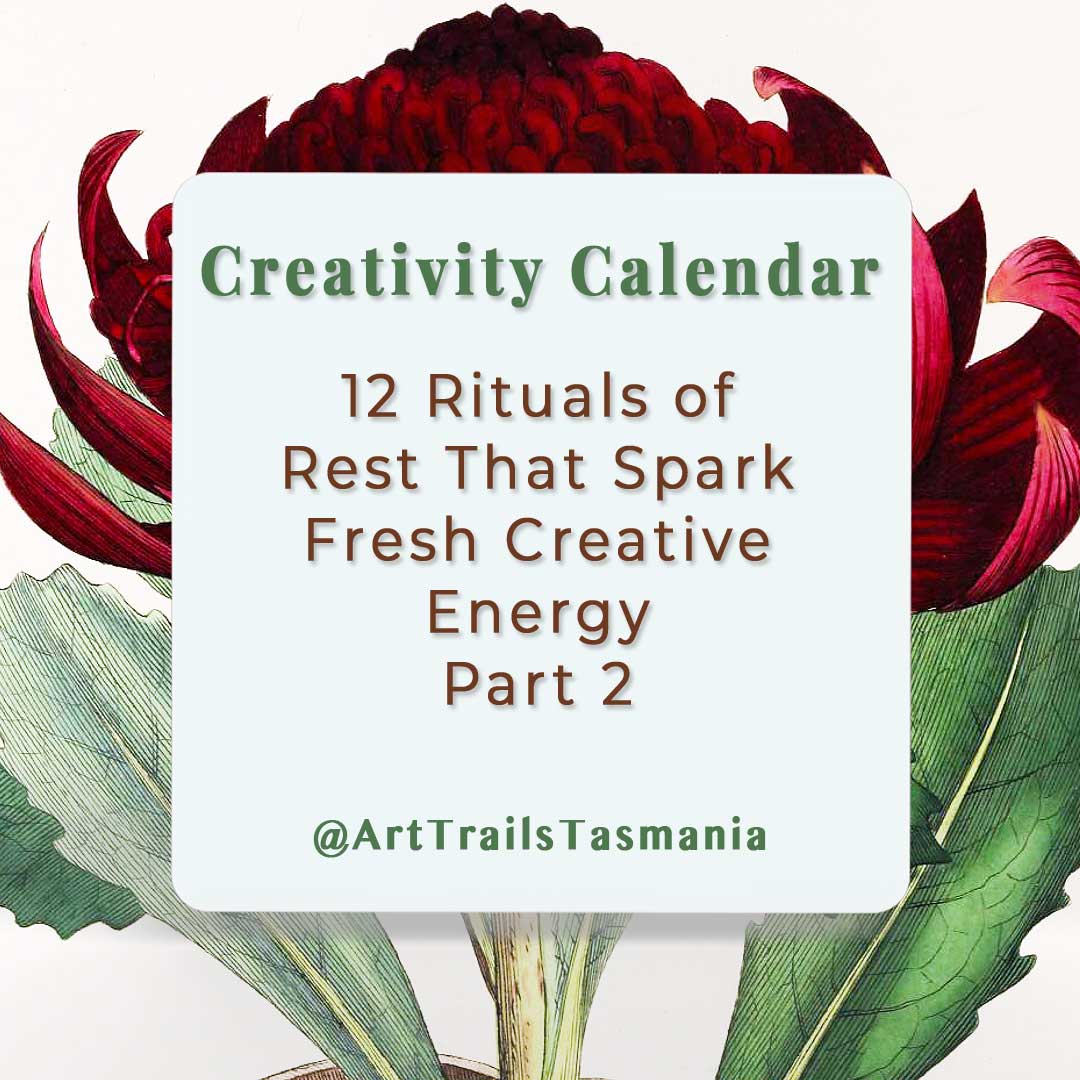
12 Practical Rituals to Explore Your Creativity
Here are 12 creative rituals for you to make your own:
1. Nature Journalling on Slow Walks
A slow walk becomes a moving meditation when combined with a sketchbook. Wander without hurry through a favourite patch of bush, a beach track, or a local garden.
Instead of counting steps or distance, attend to rhythm — the crunch of gravel, the rustle of leaves, the scent of blue gums.
Pause often to observe closely: a feather caught in grass, the spiral of a shell, a shadow pattern on bark.
Open the sketchbook and record what draws attention.
It might be a quick contour sketch, a splash of colour, or a few words describing texture or movement.
Allow imperfect marks; let curiosity lead. Nature journalling turns the outer landscape into a mirror for the inner one.
Over time, the pages fill with reminders of small wonders — a personal archive of sensory moments that quietly feed the creative spirit.
2. Blind Contour Sketching
Choose a small object — a seed pod, pebble, or flower — and place it before you.
Fix your eyes on the subject and, without looking at the page, let your pencil trace its outline in a single continuous motion.
Resist the urge to peek or correct. What emerges may look awkward, even comical, but that’s the beauty of the exercise.
Blind contour drawing teaches surrender and attentiveness. It shifts focus from results to the pure act of seeing.
This ritual dissolves stiffness in the creative hand and reminds artists that observation, not precision, is the heart of expression.
Repeating it regularly develops trust in the line itself — each curve and wobble becomes evidence of genuine looking.
Over time, this small act of discipline restores the beginner’s joy, where discovery outweighs outcome.
3. Five-Minute Creative Experiments
Creativity often thrives within small, well-defined limits. Set a timer for five minutes and give yourself a prompt such as “lines only”, “contrast”, or “movement”.
Choose any medium — pencil, collage scraps, ink, or watercolour — and start. The time pressure silences the inner critic and invites spontaneity. When the timer sounds, stop.
This ritual is a playground for the imagination.
Because the commitment is brief, experimentation feels safe; mistakes lose their weight.
Regular five-minute sessions keep creative muscles supple between larger projects.
Over weeks, these quick studies accumulate into an archive of textures, colours, and compositions that may later spark bigger ideas.
Above all, this simple ritual celebrates play — a reminder that joy and curiosity are the natural states of a healthy creative practice.
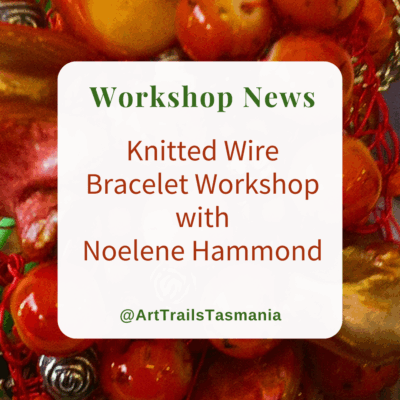
Knitted Wire Bracelet Workshop with Noelene Hammond
Learn how to create your own knitted bracelet in this workshop with Noelene Hammond and enjoy a delightful gathering focused on creativity.
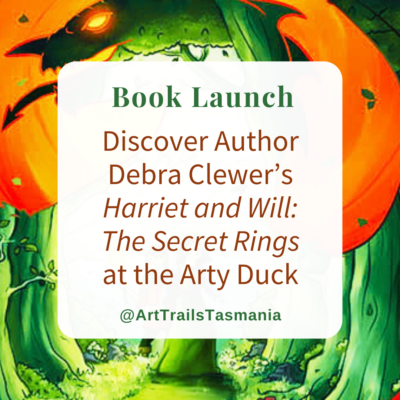
Discover Author Debra Clewer’s Harriet and Will: The Secret Rings
Join Debra Clewer at the Arty Duck for the book launch of “Will & Harriet” a time-slip adventure filled with history mystery fun activities & puppet magic!
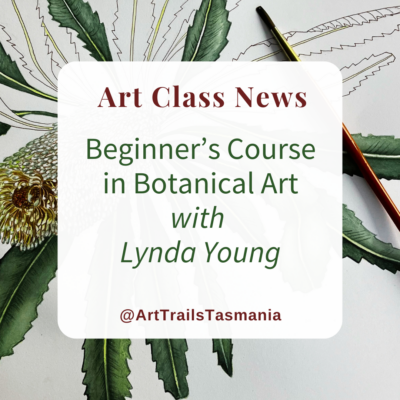
Beginner’s Course in Botanical Art with Lynda Young
Be sure to be part of this free botanical art 6 week UA3 course with Lynda Young so you can capture the joys of nature.
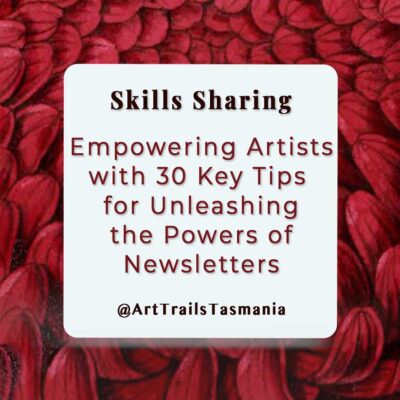
Empowering Artists with 30 Key Tips for Unleashing the Powers of Newsletters
Unlocking Success with 30 Essential Insights for Artists on Maximising Email Marketing and Newsletter Power.
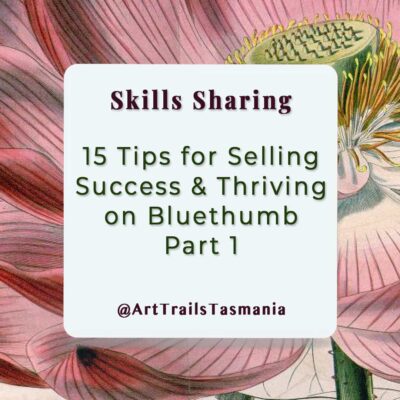
15 Tips for Selling Success and Thriving on Bluethumb Part 1
Discover 15 tips for financial success and flourishing on Bluethumb, the vibrant online marketplace connecting artists with art buyers in this two part guide by Art Trails Tasmania.
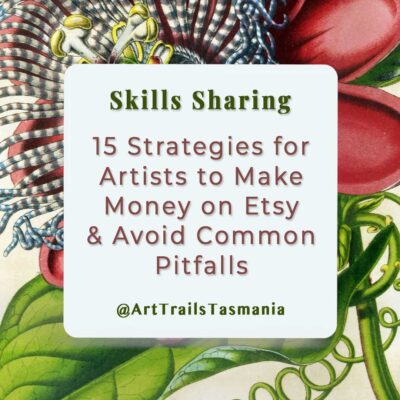
15 Strategies for Artists to Make Money on Etsy and Avoid Common Pitfalls
Discover 15 strategies to boost your income on Etsy, perfect for artists aiming to thrive in the online marketplace & monetise their work.
4. Creative Mindfulness: Listening with the Eyes
Find a still spot — perhaps a veranda, riverside, or shady tree.
Sit quietly and soften your gaze toward one area of the landscape. Rather than labelling what is seen, let the eyes rest as if listening.
Notice how light alters colours, how wind stirs patterns, how edges blur when attention relaxes.
This form of creative mindfulness teaches presence through looking. It anchors awareness in sensory experience rather than analysis.
Over time, such gentle attention seeps into drawing, writing, or crafting; perception becomes more nuanced, responses more intuitive.
Practised regularly, creative mindfulness it quietens mental chatter and restores focus. The world becomes richer, and in that richness, creativity reawakens — not forced, but invited.
5. Dream-Seed Journalling
Dreams are natural collaborations between imagination and rest. Keeping a notebook beside the bed allows fleeting images to be caught before they fade.
Upon waking, jot down fragments — colours, words, feelings, odd scenes. Resist editing or interpretation.
Over days and weeks, these scattered notes accumulate into a dream-seed journal: a collection of symbols that can later find form in sketches, stories, or designs.
Revisiting them offers surprising insights; recurring themes might whisper about new creative directions.
Even the act of recording deepens connection with intuition.
Dream-seed journalling reminds artists that rest continues to work quietly on their behalf, weaving unseen patterns that later blossom into tangible ideas.
6. The “No-Goal” Making Session
Allocate a stretch of uninterrupted time — perhaps an hour — to create without purpose.
Choose materials that feel inviting and begin without a plan. Follow impulse: make marks, tear paper, arrange objects, apply colour freely. The aim is to experience the process rather than produce an outcome.
In a world obsessed with results, the “no-goal” session feels liberating.
It dismantles pressure and rekindles curiosity. The mind rests because there’s nothing to achieve, and in that space, genuine exploration emerges.
Many artists rediscover playfulness through this approach — the kind that first sparked their love of making.
Some sessions yield accidental beauty; others end in mess. Both are equally valuable, for each session restores confidence in instinct and the joy of creation itself.
And it can be a surprisingly practical path towards revealing your own creative voice.
7. Micro-Rests in the Studio
Sustained focus can quietly drain energy, even when enthusiasm is high.
Introducing micro-rests within studio time preserves vitality.
Every 30–45 minutes, set tools down, close the eyes briefly, and take three deep breaths.
Look out a window, stretch hands, or step outside for a moment of sunlight.
These pauses recalibrate attention and prevent burnout.
They remind the body and mind that creativity benefits from rhythm — exertion balanced with ease.
Artists who incorporate micro-rests often notice more sustained flow and fewer mistakes.
Over time, the practice builds resilience; creativity becomes less a sprint, more a steady dance between action and recovery.
8. Seasonal Foraging and Material Play
Tasmania’s shifting seasons offer abundant materials for creative rest.
After rain, the ground gleams with leaves, twigs, and stones; in winter, the coast reveals shells and driftwood. Foraging is best done slowly and respectfully — take only what has already fallen.
Lay collected items on a workbench or windowsill. Let them remain there for days, perhaps weeks, without immediate use.
Observe how shapes and colours change as they dry or fade. Later, they might become printing plates, inspiration for textures, or the starting point for a sketch.
The act of gathering connects body and place, and the waiting period teaches patience. Creativity here grows from rhythm — a cycle of collecting, contemplating, and making.
9. Mapping the Creative Voice
A simple sketchbook exercise can clarify personal direction. Begin by choosing a word or emotion that resonates — “stillness”, “wild”, “renewal”.
Write it in the centre of a page. From that point, branch out with lines, shapes, or colours that echo the word. Add fragments of phrases, doodles, or associations that surface.
Over time, these maps form a visual diary of inner language. They reveal patterns — certain colours or symbols that repeat — offering clues about evolving themes.
This ritual encourages reflection without overthinking. It provides a restful way to engage creatively while stepping back from output.
Mapping the creative voice grounds practice in authenticity, showing that rest and reflection are integral to self-expression.
10. Visual Haiku Breaks
Keep a small poetry book or local art catalogue near the workspace. When energy dips, stop working and open it at random.
Read one short poem or study one artwork slowly, letting words or images sink in. Then, on a blank page, respond with three marks, three words, or a tiny sketch — your own “visual haiku”.
This ritual acts as a reset button for the mind.
The brevity of haiku encourages clarity, while the visual response reconnects feeling and form.
Practised regularly, it cultivates the ability to find depth in simplicity. It also bridges disciplines, allowing writing, art, and mindfulness to blend.
A single haiku break can shift mood, release tension, and restore creative rhythm within minutes.
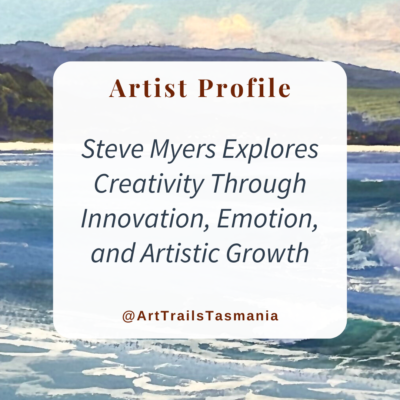
Steve Myers Explores Creativity & Artistic Growth
Meet Steve Myers as he explores creativity, innovation, emotion and artistic growth in his Art Trails Tasmania Artist Profile.
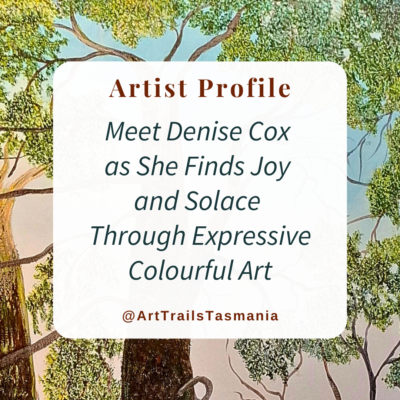
Denise Cox Finds Joy Through Expressive Colourful Art
It’s time to meet artist Denise Cox as she shares her joy and solace found through expressive and colourful art in her Artist Profile story with Art Trails Tasmania.
11. Seasonal Reflection and Sketch Exchange
At the end of each season, take an hour to revisit recent work — journal pages, sketches, photographs, or experiments.
Spread them out and look without judgement. Which ones still feel alive? Which carry quiet promise? Note these in a few lines on the back of the page or in a notebook.
If possible, exchange a few pieces with another maker — through the post, at a local market, or over tea.
Seeing one’s work through someone else’s eyes offers fresh insight. Reflection brings closure; sharing reawakens connection.
This gentle ritual of review and exchange ensures creative growth remains communal and cyclical, much like the seasons themselves.
12. Light Sketching at Dawn or Dusk
Dawn and dusk hold a softness that encourages contemplation.
Settle outdoors with a sketchbook or camera as the light shifts. Work quickly, responding to changing colours and forms. Allow imperfection; let the fading or emerging light decide when to stop.
These sessions nurture patience and humility. The transient light demands attentiveness but forbids overworking.
It invites surrender — a trust in fleeting beauty.
Repeated through the year, the practice documents the landscape’s moods and deepens connection with place.
For many, it becomes a daily meditation: a pause between sleep and activity, rest and creation, where the boundary between both gently dissolves.
This practice can be a lovely pathway to healing with creativity.
Rest as a Companion to Making
These twelve rituals transform rest into a creative ally. They work best when practiced lightly — woven into ordinary routines rather than scheduled as obligations.
Each one offers a different way to pause: through attention, touch, reflection, or play. Which ones are resonating with you? Are there variations on them that appeal?
For artists and makers, these practices align naturally with local landscapes and rhythms — sea air, shifting skies, and bush textures.
Rest becomes not a withdrawal but a listening, a moment where the mind slows enough to let imagination breathe.
When creativity is nourished by rest — by nature journalling, sketching, mindful seeing, and joyful experimentation — energy returns in fresh and surprising ways.
The voice of making grows clearer, the process becomes kinder, and the work itself begins to hum with renewed life.
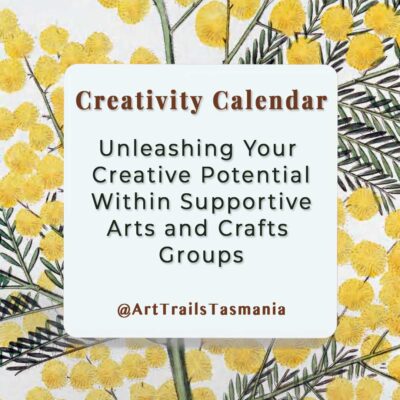
Unleashing Your Creative Potential Within Supportive Arts and Crafts Groups
How to unleash your creative potential within the welcoming and supportive community of arts and crafts groups and flourish creatively wherever you are.
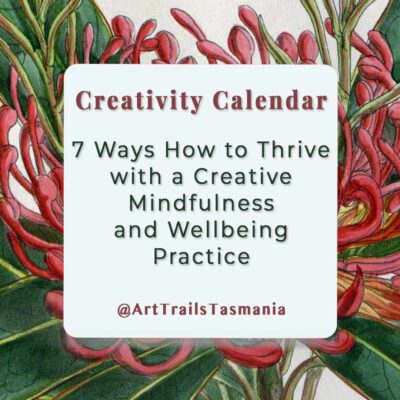
7 Ways How to Thrive with a Creative Mindfulness and Wellbeing Practice
Exploring creative mindfulness practices in 7 ways for mental health, how to embrace it and 7 fun daily mindful rituals so you can thrive artistically.
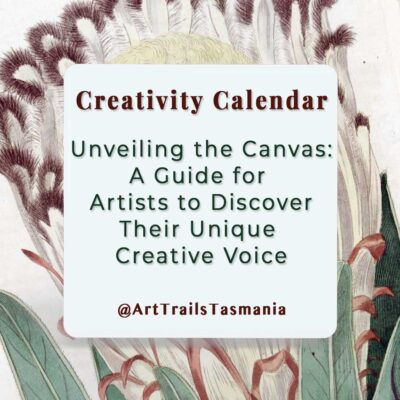
Unveiling the Canvas: A Guide for Artists to Discover Their Unique Creative Voice
Embark on the journey to find your creative voice with tips on self-discovery, techniques to explore and practical insights with Art Trails Tasmania.
Read the Latest How To Blog Stories
Empowering Artists with 30 Key Tips for Unleashing the Powers of Newsletters
How to Craft a Power Artist Newsletter Email newsletters are digital communications sent to subscribers' inboxes on a regular basis, typically containing updates, announcements, and exclusive content. For artists, galleries, and creative business owners, newsletters...
15 Tips for Selling Success and Thriving on Bluethumb Part 1
How to Succeed on Bluethumb: Part 1 In this two part series about Bluethumb we take a deep dive into how you can succeed on this art lovers platform that was started in Australia in 2012. Initially conceived as a solution to connect local artists with buyers,...
How to Be a Top Selling Artist on Bluethumb Part 2
How to Financially Succeed on Bluethumb: Part 2 In the second segment of our comprehensive guide to mastering the Bluethumb marketplace, we're delving deep into the intricacies. We'll dissect crucial elements like pricing strategies, product diversity, and the art of...
How to Effectively Promote Your Events on Facebook and Instagram
15 Tips for Promoting Your Events on Facebook and Instagram An artist-led event deserves promotion on Facebook and Instagram due to their unparalleled reach and engagement capabilities. These platforms allow artists to connect directly with their audience, leveraging...
15 Strategies for Artists to Make Money on Etsy and Avoid Common Pitfalls
How to Make An Etsy Store Work Setting up an Etsy store can still be a smart move to make money from your arts and crafts. It can be the ideal channel for testing designs, bringing ideal customers to your own online store, growing your social media profiles, email...
How to Craft Engaging Event News Stories with Chat GPT
The Power of a Well Told Story with Chat GPT Help The power of a well told story is immense, it engages your ideal reader, it inspires action and it opens doors for you - expected and unexpected doors. So it is vitally important to be able to tell the story of your...
Read the Latest Blog Stories and Flourish…
Calendar of Workshops and Classes with Julie McDonald
Art Workshops and Classes at Historic Quamby Estate with Julie McDonald Immerse yourself in inspiring art classes and workshops at the beautiful historic Quamby Estate with Artist in Residence Julie McDonald. Quamby Estate 1145 Westwood Road, Hagley 7292 Tasmania...
An Abiding Love for Colour and Making with Noelene Hammond
Mixing Colour, Brightness & Abundance My love of colour started when I began selling in art galleries. Black, white and grey do not work. I try to create a picture in my head. My boxes of coloured wool I could not be without, as they give me great joy. My...
Beyond Print with Stitch Workshop with Gaye Nieuwenhof
Be Part of the Beyond Print with Stitch Workshop Led by Gaye Nieuwenhof Come along with a collection of local flora that is special to you, then print with your collection in exciting innovative ways you may not have tried before. Collage and stitch to create a piece...
Intentional Creative Experimentation Practice Part 1
It's Time to Flourish with Intentional Creative Experimentation Intentional creative experimentation is all about stepping outside your comfort zone to play, explore, and grow in your art and craft practice, but with a clear, thoughtful purpose. This blog is the first...
9 Fabulous Books for Makers
Book Review Time for All of Us Makers In this book review, we explore a selection of beautifully crafted titles published by Search Press Australia, all of which are available online. These books are a true celebration of creativity, offering a diverse range of...
Steve Myers Explores Creativity & Artistic Growth
Finding the Joy and Thrill of Creativity with Steve Myers The thrill of experimenting with new techniques, materials, or concepts can be incredibly fulfilling. Seeing how my work resonates with others, evokes emotions, or sparks conversations can be immensely...
Denise Cox Finds Joy Through Expressive Colourful Art
The Joys and Solace in Art with Artist Denise Cox At this stage in my life, I seek solace through my art. Being creative brings me joy, peace and a sense of accomplishment. I love being immersed in the colour, texture and the adventure of painting. Painting for me is...
Explore the Christie Lange Exhibition: Forest Fragments
Explore the Christie Lange Exhibition "Forest Fragments" Discover the intricate beauty of Cradle Mountain’s ecosystems in “Forest Fragments” by Tasmanian artist Christie Lange. Through ceramics, porcelain, and textiles, Lange celebrates the delicate mosses, fungi,...
Be Part of the Art Trails Tasmania Art Exhibition
Discover the Artists & Galleries of the Art Trails Tasmania Art Exhibition The Art Trails Tasmania Art Exhibition is an annual celebration of the island’s thriving art scene, connecting art lovers with talented local artists across various media. From painting...
Read What Our Members Say About Belonging
Join the growing, supportive artists community today and have your Artist story told here.
Belinda is doing a great job creating a professional looking artist hub online. Check out the profile I posted recently to see how well she does them. To all my artist friends let’s help make this THE go to place to discover local artists.
You won’t regret joining Art Trails Tasmania . It’s a welcoming community for creatives at any career stage.Becoming an Art Trails Tasmania member wasn’t a hard decision for me to make as it’s such a wealth of knowledge and support.Being member provides a quality way to showcase your creative endeavours and it’s quickly growing in reach.
We operate a home based picture framing business and recently joined Art Trails Tasmania as a means to giving us exposure to the wider artist community. We have almost immediately seen increase in activity thru our online sites, which I am certain will lead to more opportunities to grow our business.

